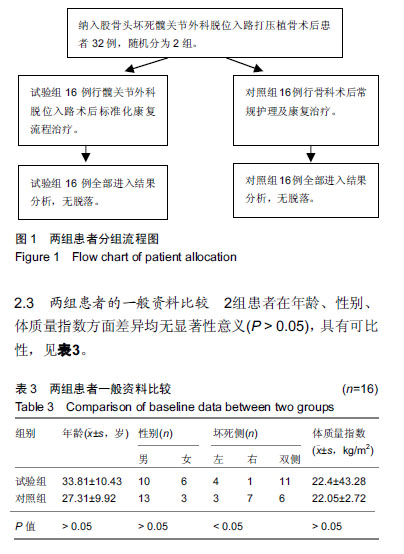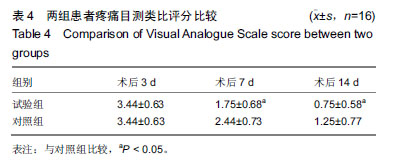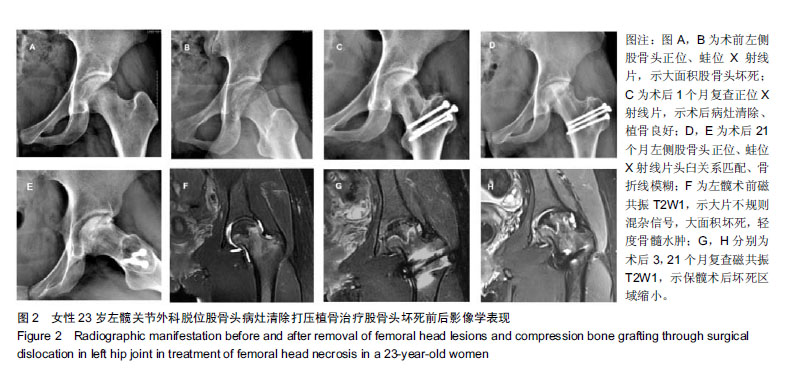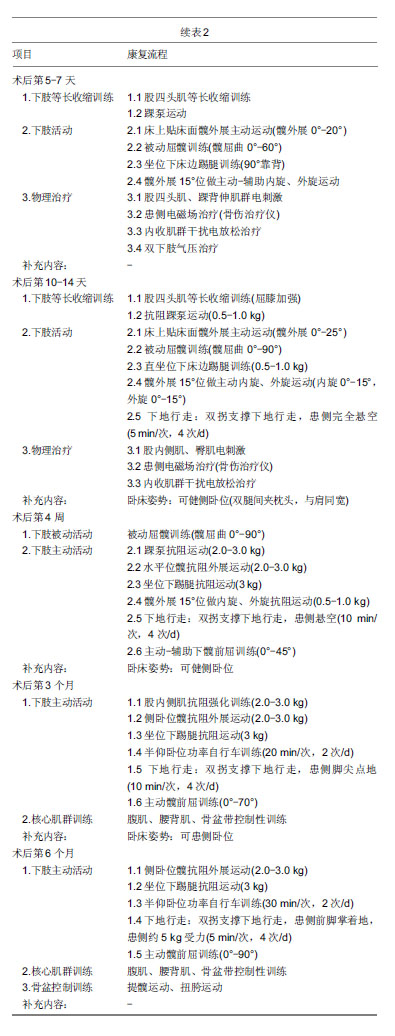中国组织工程研究 ›› 2019, Vol. 23 ›› Issue (24): 3812-3818.doi: 10.3969/j.issn.2095-4344.1231
• 骨科植入物 orthopedic implant • 上一篇 下一篇
股骨头坏死外科脱位入路打压植骨支撑术后超早期康复介入的保髋效果
陈海诚1,袁颖嘉1,黄楚瑶2,陈国铭3,魏秋实1,陈 聪1,周 驰1
- 1广州中医药大学第一附属医院,广东省广州市 510405;2广州中医药大学针灸康复临床医学院,广东省广州市 510405;3广州中医药大学第一临床医学院,广东省广州市 510405
Hip-preserving efficacy of ultra-early rehabilitation after bone grafting through surgical dislocation approach in osteonecrosis of the femoral head
Chen Haicheng1, Yuan Yingjia1, Huang Chuyao2, Chen Guoming3, Wei Qiushi1, Chen Cong1, Zhou Chi1
- 1the First Affiliated Hospital of Guangzhou University of Chinese Medicine, Guangzhou 510405, Guangdong Province, China; 2Clinical Medical College of Acupuncture, Moxibustion and Rehabilitation of Guangzhou University of Chinese Medicine, Guangzhou 510405, Guangdong Province, China; 3the First Clinical Medical College of Guangzhou University of Chinese Medicine, Guangzhou 510405, Guangdong Province, China
摘要:
文章快速阅读:
.jpg)
.jpg)
文题释义:
髋关节外科脱位入路:术中将髋关节前脱位,可完全显露股骨头和髋臼,通过股骨头大转子截骨并彻底清除头内死骨病灶以保护旋股内侧动脉深支血供,主要应用于髋关节开放手术。
保髋术后超早期康复介入的意义:在于从改善术后局部症状到促进股骨头骨质修复、预防负重下关节面塌陷或再塌陷,增加坏死后股骨头留存年限,以达到保留患者自身髋关节“带塌陷生存”的目的。保髋术后康复措施在于恢复外展肌力,维持髋关节活动度、减轻术后关节、骨髓水肿,尽可能避免关节负载,预防术后感染、血栓形成。
摘要
背景:研究发现股骨头坏死术后康复可促进恢复髋关节功能。
目的:探讨股骨头坏死外科脱位入路打压植骨支撑术后超早期康复介入的保髋效果。
方法:纳入中青年ARCOⅢ期股骨头缺血性坏死患者32例,随机分入试验组与对照组,每组16例。所有患者对治疗方案均知情同意,且得到医院伦理委员会批准(批件号:中医一附伦审科[2015]010号)。2组均接受常规的袁氏生脉成骨片药物治疗,联合采用经髋关节外科脱位入路打压植骨支撑术。对照组介入常规术后康复训练,试验组给予术后超早期康复训练流程。以疼痛目测类比评分和髋关节功能Harris评分评价关节恢复情况,以股骨头塌陷超过4 mm为终点事件,观察2组患者术后3,7,14 d的目测类比疼痛评分以及术后1,3,6个月的髋关节功能Harris评分。
结果与结论:①目测类比评分:组内比较,术后3,7,14 d试验组目测类比评分逐渐降低(P < 0.01),对照组目测类比评分也逐渐降低(P < 0.01);组间比较,2组随着康复训练时间的增加术后疼痛减轻,术后7,14 d试验组目测类比评分均低于对照组(P < 0.05);②髋关节功能Harris评分:组内比较,术后1,3,6个月试验组的Harris评分逐渐升高(P < 0.01);组间比较,术后3,6个月试验组的Harris评分均高于对照组(P < 0.01);③提示超早期康复介入能够在一定程度上改善股骨头坏死保髋术后的功能恢复速度和程度,术后标准化康复流程有助于促进股骨头坏死患者术后功能恢复。
中国组织工程研究杂志出版内容重点:人工关节;骨植入物;脊柱;骨折;内固定;数字化骨科;组织工程
ORCID: 0000-0003-1084-3629(陈海诚)
中图分类号:
R459.9




.jpg)
.jpg)

.jpg)
.jpg)
.jpg)